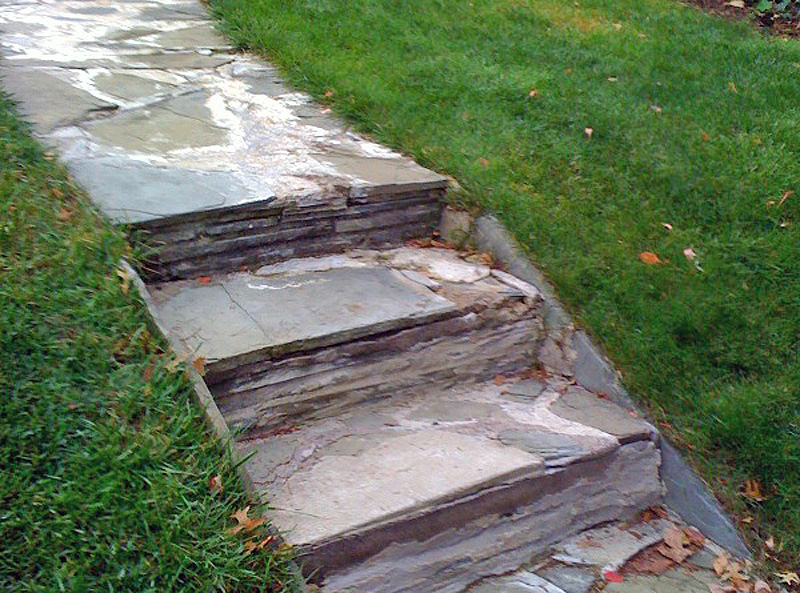
6 Signs of Structural Damage You Should Not Ignore
Posted on June 23, 2022Structural damage is a serious issue for your home. It can go unnoticed for years, continue to worsen, and cause other problems. Usually, once signs of structural damage are visible and noticeable, you have a bigger problem on your hands. It’s important to fix it before it continues to get worse. Here are some signs of structural damage you should not ignore:
1. Cracks in the Foundation
Vertical hairline cracks are relatively normal and do not tend to be a sign of issues. They tend to appear in the first few years after construction as the concrete adjusts to the natural settling of the house. However, if you see large cracks in your home’s foundation, especially diagonal cracks or cracks that are wider at one end, it is a definitive sign of structural damage that you need to look into repairing as soon as possible. Damage to the foundation can be one of the ways bad weather can impact your home, but weather is not the only thing that can cause structural damage.
Although foundation repairs tend to be costly, it is far more expensive to put them off and you risk serious damage to your home by leaving issues unaddressed. Not only is this important for your home, but checking the foundation is also one of the things to consider before finishing your basement, building a home addition, or doing a lot of other remodeling on your home.
2. Cracks on the Ceiling or Walls
Although not every single crack you may see on walls or ceilings is an indicator of serious structural damage, you do not want to ignore them and leave them unchecked. Generally, small cracks are a sign of a larger problem and will get worse over time.
If there are large cracks on the walls or ceiling or cracks above doorways, especially when paired with bulging walls or sagging ceilings, they are signs of serious structural damage that need to be addressed as soon as possible.
3. Cracks in the Chimney
If you have a chimney and you notice cracks in the bricks or the mortar, it’s a sign that something isn’t right. It’s possible the chimney stack was built incorrectly or hasn’t been maintained properly.
It’s also likely that excessive pressure is being put on the bricks by your home shifting or another structural issue. This can also be true for any cracks you notice on other exterior walls or surfaces. Regular checks and maintenance are some of the most important roof maintenance tips that you should be doing for every part of your home.
4. Gaps Between the House and Soil
If there are gaps between your house walls and soil, it could be bad landscaping or it could be a sign of structural damage. Soil does expand and shrink a bit throughout the seasons, but it shouldn’t pull away from your home and cause gaps.
Check around your home’s perimeter and around any patios, decks, porches, etc. If you see significant gaps, it could be a sign that your home’s foundation was not laid properly or that it is cracked or shifting in some way that is also likely negatively affecting other structures of your home as well.
5. Cracked or Sloped Floors
Uneven flooring isn’t always a sign of major structural damage, but it can be. Sloping, sagging, or cracking floors are signs of structural damage caused by shifts in your home’s foundation. You may also notice other signs that are less visible when it comes to your floors.
A floor should feel sturdy and solid when you walk on it; if it feels like it has give or just started feeling “bouncy” after years of being fine, it’s one of the signs it’s time to replace your flooring and can be a sign of structural damage. This can indicate a sagging floor before it’s visibly noticeable and is a definitive sign that something structural has changed with the floor.
Squeaking and creaking floors are house sounds you don’t want to ignore; in some cases, it can be normal, but is usually a sign of concern and can indicate structural damage. The more your home shifts, the more likely you will see more drastic sloping, sagging, or cracks in your flooring. These are structural imperfections that are signs of a bigger issue and that you should not ignore.
6. Gaps Around Windows and Doors
Windows and doors that don’t lock properly, are difficult to open and close, and more are signs of poor installation. Poor installation is one of the common causes of window cracks and damage to doors. Unfortunately, the same things can also be signs of structural damage in your home.
If you have trouble with your windows and doors, see gaps around them, see them separating from the wall, doors that stick and won’t close, and more, it might not be a case of poor installation. The walls with windows and doors are areas of your home that are more vulnerable to pressure, so the areas around windows and doors tend to show signs of structural damage before other areas.
If you see these signs, find a home improvement contractor you trust to evaluate your windows and doors. This can help determine whether poor installation, structural damage, or both are contributing to the issues.
These are just a few signs of structural damage you should not ignore. Once you see any of them, it’s a good idea to make addressing the issues one of your home improvement resolutions, reach out to an experienced contractor who can help you identify the source of the problem, find any other damage related to it, and give you a plan to fix it.
If you need maintenance on your home, another type of home improvement, or just want to get started on your next home improvement project, contact Zephyr Thomas at 717-399-4708 to start a free quote.
